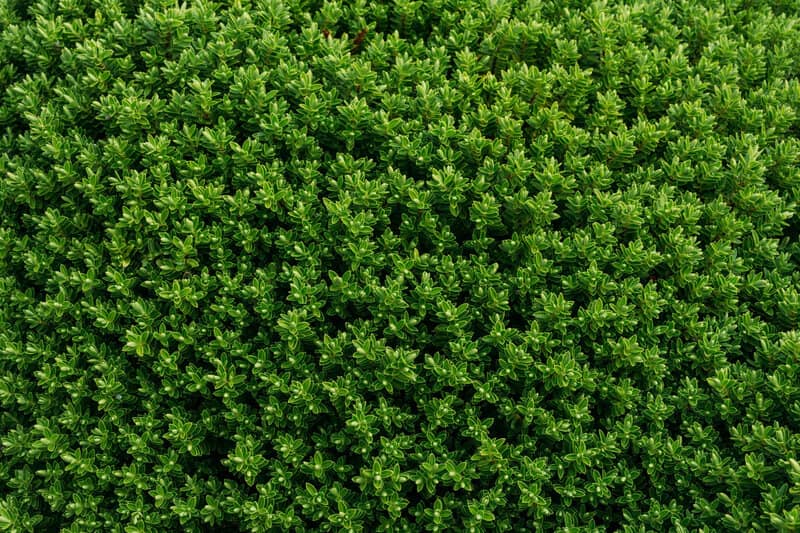Hedges and other bushes that need to be kept in a distinct shape for privacy or because you’ve lovingly shaped it to look like a giant bunny, need to be pruned throughout the summer.
The best time may include trimming them during this season if their health is at stake.
It is important to consider the health of your bushes when deciding whether or not you should prune them in summer.
For instance, if they are getting too unwieldy and start whacking you in the face as you walk up your front path then it may be time for a trimming!
In addition, hedges that need to maintain a certain shape because privacy needs dictate so will have best results with some timely trims during this season.
Evergreen plants can receive periodic maintenance throughout their life by taking on one last round of work before winter sets in which includes cutting back dead branches among other things- just make sure these jobs don’t put undue stress on already weakened parts !
When Should You Trim Hedges in Summer?
Damaged Wood
If you notice any bush damaged due to weather conditions, disease, or animals, prune those branches right away, even if the bush hasn’t been pruned optimally in the summer.
A dying or dead wood can be a starting point for insects or diseases that damage other shrubs.
Dip the pruning shear blades into Pine-Sol or Lysol between the cut to ensure the disease doesn’t spread from different branches on the shear.
Avoid using chlorine-based bleaching solutions because bleach corrodes the metal blades of the tools.
Also read: What is The Proper Way To Trim a Hedge?
Spring Flowering Bushes
To determine the flowering bushes is part of the successful pruning plan. Like forsythia that grows in the Department of Agriculture in the U.S., some of them grow in the hardiness zones five through nine, bloom in early spring, and buds form in the preceding summer.
To avoid removing flower buds the subsequent year, prune these early-blooming bushes once the flowers fade, which can be in the initial summer.
Cutting in mid and late summer will adversely affect the flowers of the next spring.
These shrubs should also be pruned in early summer to give them time for healing and developing new growth, which will mature before cold weather sets in.
Also read: Hedge Trimming Safety Tips
Summer Flowering Bushes
The bushes, which flower in summer, bloom as the current growing season unfolds. These bushes don’t require pruning during summer before flowering as this will remove all the buds, which want to bloom.
You can prune these bushes before the new growth starts in spring, whether they’re dormant in early spring or winter.
Examples of these summer flowering bushes include the butterfly bush, grown in the USDA zones 6-9, and the Rose of Sharon, grown in the USDA zones 5-8.
You can trim them after flowering to develop their shape if necessary. You will not remove the buds they require for the following growing season, but pruning these shrubs in summer will slow the leaf growth.
Related post: Can You Use a Pole Saw as a Hedge Trimmer?
How Do You Trim an Overgrown Hedge?
Gardeners who need thick hedges are supposed to train the shrubs with regular pruning when they’re young. But trimming does not stop even when they are established.
Regular trimming is important to keep making the hedges look neat. As they grow too big for their shape, the gardeners can heavily prune them, transforming and turning them from dense shrubs to well-tended fences.
- Cut the heaviest and lowest branches at the trunk back when they overgrow. Since pruning creates new growth, pruning of the shrub lower can encourage dense foliage, which defines the hedges. The time which is safe to do this in early spring. At the end of the year, you can prune the new growth and leave the thin hedges in place.
- Trim the top of the hedges till the plants are about 60 cm high in spring. Typically, this tames them, which have overgrown. Although this trimming makes the hedges look bald and stubby, the new growth can be seen, making them appear more uniform and thicker than before.
- Shape the hedges so that they are fuller at the bottom and narrower at the top. Make this effect of sloping subtle, but even a slight tapering can assist the sunlight in reaching all the shrub parts. When the upper branches start to extend from the lower twigs, reshape them.
The Best Time for Trimming Hedges
The best time for hedge trimming is in early spring. Since pruning encourages strong new growth, regular pruning is necessary to shape the hedges.
Hedge trimming must be a constant process to ensure compliance. If the hedges grow quickly without pruning, they become leggy and long.
These needs summer punning.
Typically, the right time for trimming boxwood, which has been cut into proper hedges, is in the spring when new growth starts and then through summer and spring. This will fill in the borders and make them look good.
Ensure you prune them before they begin to grow between 6 and 8 inches after the last prune.
The informal hedges that don’t want to retain the exact shape need to be maintained when the fence is idle and mid-summer. Let the informal hedge keep its natural shape.

